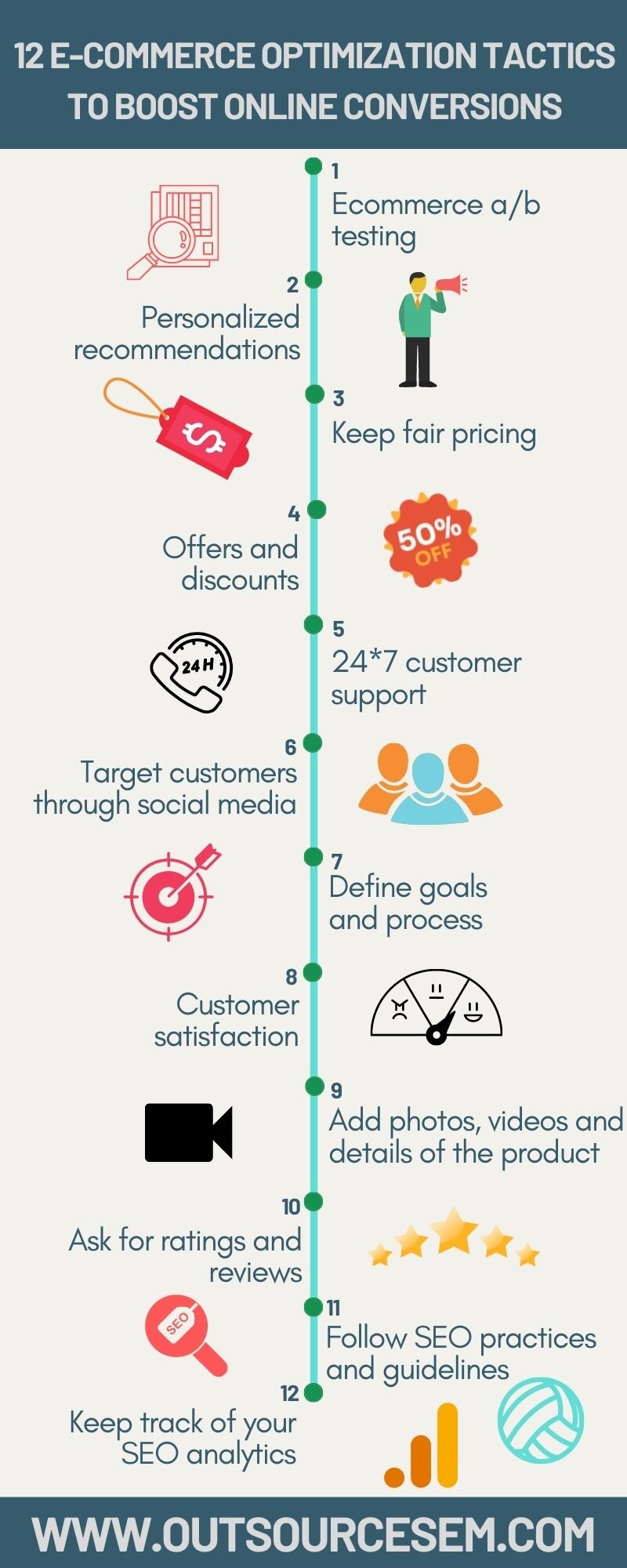The e-commerce industry, which involves selling & purchasing products with the help of online platforms, has now become the most popular way of shopping. The fact that proves this statement is that now global e-commerce has jumped to $26.7 trillion and increasing at an unprecedented speed. Only in the United States, the percentage of online sales in total retail sales increased from 9.9% to 14.0% during the years 2018-2020. Even in the global pandemic, when many industries were shut down, e-commerce businesses were making significant growth and fulfilling the needs of millions of people.
With the increasing demand for e-commerce products and their benefits to marketers, many business owners are finding their future in the e-commerce industry. One of the significant benefits of online shopping is you can target and serve global customers with a website. Reputed brands and companies are also developing e-commerce websites to serve their customers in a better way. But without proper knowledge and e-commerce optimization strategy, one cannot get online conversions. First, you need to work on e-commerce SEO and conversion rate optimization to stay in the competition. This blog will discuss e-commerce conversion rate optimization strategies and how to develop an e-commerce website to get maximum online conversions for your online business.

What are e-Commerce optimization, conversion rate and conversion rate optimization?
Conversion in digital marketing means fulfilling the website goals. E-commerce conversion means offering products with descriptions that create an urgency for them to make a purchase. Suppose you created an e-commerce website and set the plans for the user visiting your website to fill out a particular form, sign up, or click on the specific link. When a visitor completes this particular task, it is counted as a conversion. Generally, for an e-commerce website, the conversion journey is like visiting or surfing your website to make a purchase. In this journey, the visitor has to go through various steps, and if there is ambiguity in any of the steps, it can ruin the user’s shopping experience. Conversion rate is one of the most vital metrics for businesses. It is the ratio of the conversions to the total number of visitors on your website multiplied by 100.
Conversion rate = conversions/total visitors * 100
E-commerce optimization is an integral part of e-commerce search engine optimization(SEO) in which a website owner works on their website to make it more accessible and convenient for the users to purchase without any hustle. This includes step-by-step optimization like website design, user navigation, page depth, images and videos, checkout page, fair pricing, etc., that leads to the fulfillment of the final goal that is selling for most e-commerce websites. Likewise, conversion rate optimization(CRO) for the e-commerce business is optimizing their website-like shopping experience so that the maximum number of users can make purchases on the website. E-commerce conversion rate optimization includes numerous KPIs and should know the goals like who is your target audience, the website's primary goal, high-quality images and videos, simple and easy navigation, fair pricing, etc. Increasing the percentage of the number of potential customers to your website is the ultimate goal of e-commerce conversion rate optimization.

Tactics for e-commerce optimization to boost online conversions

1. E-commerce a/b testing - One of the most useful e-commerce marketing strategies includes a/b testing. It is the method used to determine the effectiveness of a particular design, font, template, headline, content, functionality, etc. For example, you select two designs to showcase your product, apply both designs for a specific time frame and see which one gets more traffic or conversions. With this method, you would get a clear idea about which design you should use on your website. You can use this method to determine your website's most suitable meta title and meta description.

2. Personalized recommendations - Nowadays, social media platforms, search engines, apps, websites, news sites, and the internet are working on personalized recommendations. Website owners or internet giants like Google, Yahoo, Amazon, YouTube, etc., keep an eye on the user's activity & search behavior and show recommendations that best match their search intent. You can also use the same technique to offer users personalized recommendations or suggestions based on their previous searches. This helps increase the number of returning users on your website and more online conversions; you can also retarget the users to convert them into regular customers of your business with the help of shopping history. But at the same time, you should take care never to force users to purchase from your site as this can impact your brand image.
3. Keep fair pricing - Pricing of the product or services is the factor that drastically attracts a huge number of customers to your website if placed well; otherwise, it can impact negatively. Therefore, be accurate and balanced with your pricings. Any hidden charges must be avoided, and other costs like shipping & taxes should be clearly mentioned so that users easily decide whether they can go for the purchase or not. Do not overprice any of the products or do not underprice that you suffer a loss. Be very transparent with the pricing or any other charges to gain the customers' trust. For a better pricing strategy, it is suggestable to refer to your competitors at what price they are offering the same product and the percentage of the discounts they are giving? Any type of price hike or discount should be reflected on the page because it affects the huge number of customers.

4. Offers and discounts - E-commerce marketing strategy cannot become successful without the discounts and offers on your products, as customers of any age love discounts on their favorite products. In fact, you can attract web users to make a purchase on your e-commerce website with the help of attractive offers, discounts or by running a sale for a fixed period on various products. Big e-commerce industry players are running time-to-time deals & sales programs on their platforms depending on the location or country of the users.

5. 24*7 customer support - Customers cannot trust your e-commerce business until they get their doubts cleared or get solutions to their queries. So, functional customer support through chats, bots, calls, or any other mode can be helpful for the customers and your company. Try to consider and fix all queries of the customers related to your business found anywhere, even in social media chats or comments. Replying to users' comments and reviews is considered good practice for SEO as people expect it, especially in the case of a negative review. Also, you can create a list of the most common queries in the form of frequently asked questions (FAQs) that will answer the possible questions of the customers in advance; this way, you can clear the doubts of more customers. This will enhance the users’ experience (UX) on your e-commerce website.

6. Target customers through social media - Social media advertising is one of the most popular forms of digital marketing and helps in getting online conversions. You must build an effective social media marketing campaign and target the potential customers to reach your e-commerce website. You can run ads across various social media platforms like Facebook ads, Instagram ads, LinkedIn ads, etc., to target a wide range of customers.
7. Define goals and process - Business goals act like milestones for the company, which helps measure your business's growth. Businesses have some fixed and predefined processes according to which the company can operate. Also, you have to fix some short-term and long-term goals to know how your business is performing and whether it is moving in the right direction or not.

8. Customer satisfaction -Satisfied customers are the guarantee that you are doing well in your business. But satisfying your customers is not easy, as you have to work on finer things to achieve it. Like providing a 360-degree view of the products, honest ratings and reviews for the products, including videos of the products, offers and coupons in one place, easy return and exchange policy, faster checkouts, various payment methods, cash-on-delivery facility, free shipping, full details of the product, quick reply on users’ queries through chat or any other method, similar suggestions for the product, etc. This list can be too long and vary from business to business. Also, keep track of the recently viewed and unpurchased items that can be used to retarget the customers.
9. Add photos, videos and all the details of the product - The more details you provide for the product, the better the customer experience. So you must add good-quality photos showing the entire product and videos containing the product information; if it has reviews from a genuine customer or real-life application, it is much better. Also, provide all the details like the manufacturer's contact number, address, product origin, measurement, etc. Every finer detail of the product can help the user to understand the product and build their trust; they can be more assured about purchasing the item or service.
10. Ratings and reviews - As 91% of young users trust online reviews, it cannot be ignored as this is a huge number. Asking for the customer's ratings and reviews from the customers and adding them to your e-commerce website is an integral part of e-commerce SEO. 70% of consumers provide reviews if asked, so don’t hesitate and go for it. This builds the website authority and helps get more online conversions. No doubt that reviews can affect the customer's decision to buy a particular item or not; thus, the more reviews you have, the better it is for your business. Also, you should add a section on the website that asks the customers to provide overall feedback about your service. This can also be done through surveys.

11. Follow SEO practices and guidelines - There are billions of websites registered on Google, but only some of them appear for a specific set of keywords. Also, e-commerce has become a vast field in which you must work hard on your e-commerce SEO strategies to stand out and rank in organic results. Now the question is, do you optimize your website or content in accordance with your industry-targeted keywords? If not, then you cannot build an effective e-commerce marketing strategy.
Conducting proper SEO keyword research relevant to your business and using it frequently in your website content enhances the performance of your e-commerce website. Outsource keyword research services to effectively target the keywords users search for. Other SEO practices you should focus on include improving the landing page experience, making the website mobile-friendly (as nearly 75% of the total internet users will use the web through mobile devices by 2025), etc. Slow page loading speed is also a reason for the high bounce rate on websites, so consider optimizing the page loading speed to ensure that more visitors engage with your website and stay longer on the page.
12. Keep track of your SEO analytics - Measuring your website's SEO health is vital to measuring your marketing campaign's effectiveness. Keep an eye on the digital analytics with the help of Google Analytics or other SEO tools to know how your SEO metrics perform like website traffic, keyword rankings, etc. You can also prepare weekly or monthly white label SEO reports that discuss the SEO campaign's performance for a certain period.

Conclusion
A powerful e-commerce marketing strategy includes formulating a better SEO plan and technique. You have to work on every aspect of it to make your e-commerce business successful. For any business, always think for a customer's ease and convenience, not as a business tycoon, because only happy and satisfied customers can make your business successful. For happy and satisfied customers, you have to provide them enhanced shopping experience, which is only possible with proper market research and competitor analysis. To increase the e-commerce conversion rate, you should adequately know your business's targeted audience.
Whether offline or online, marketing is a must if you don’t want to lag in the vast competition to reach the target audience. Many reputed brands are building an e-commerce PPC campaign and formulating SEO strategies to gain maximum visibility across search engine results pages. Outsourcing digital marketing companies that help build web design, SEO campaigns and improve PPC campaigns' performance can be preferable as it saves your valuable time and effort, which you can use in business development and setup. Also by hiring our SEO experts you can avail various SEO services like plumbing SEO, painting SEO, flooring SEO, lawyer SEO, small business SEO and various other services, if you are operating in different sectors. All these services can lead to increase in website traffic and growth in your overall business.
References
1. E-commerce optimization: 6 steps to boost your conversion rates
2. How to optimize your e-commerce site for search engines
